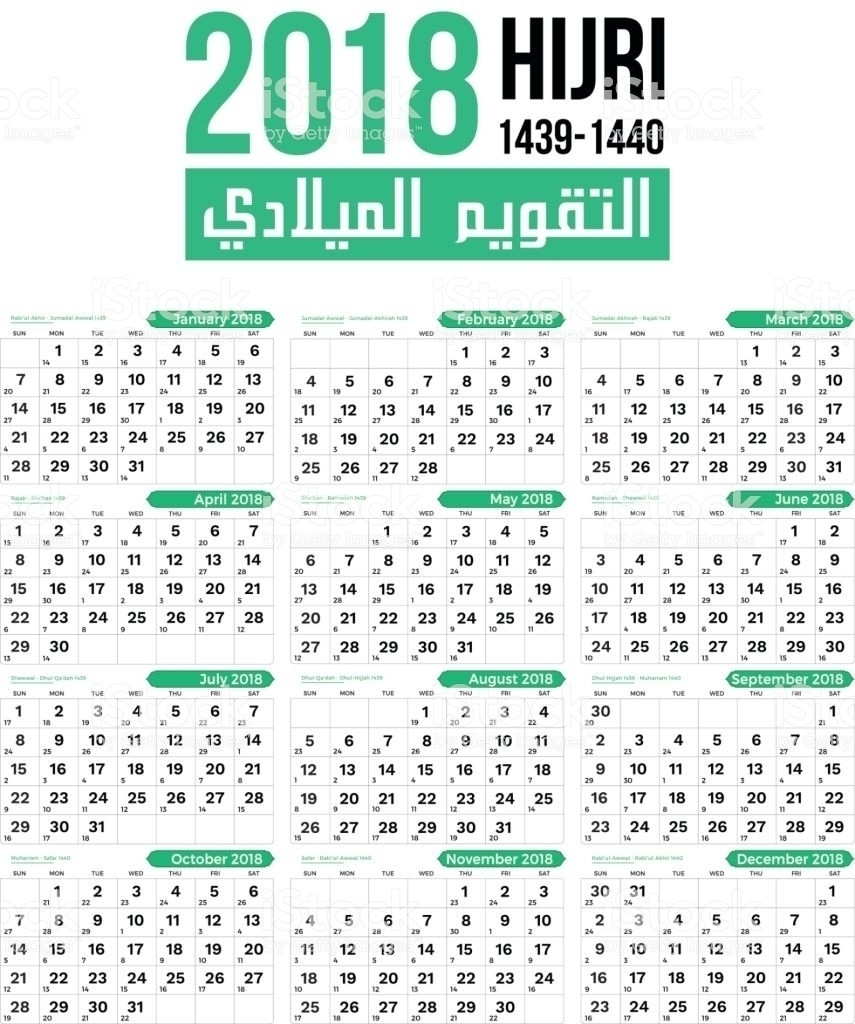
Battle of Badr – First major battle in early Islam (624).However, certain sects and groups, most notably Bohras Muslims namely Alavis, Dawoodis and Sulaymanis and Shia Ismaili Muslims, use a tabular Islamic calendar in which odd-numbered months have thirty days (and also the twelfth month in a leap year) and even months have twenty nine. Consequently, each month can have 29 or 30 days depending on the visibility of the moon, astronomical positioning of the earth and weather conditions. Traditionally this is based on actual observation of the moon's crescent ( hilal) marking the end of the previous lunar cycle and hence the previous month, thereby beginning the new month. Each month of the Islamic calendar commences on the birth of the new lunar cycle. The Hijri year has twelve months, whose precise lengths vary by sect of Islam. Adoption of this calendar was then enforced by Umar. Tradition credits Othman with the successful proposal, simply continuing the order of the months that had already been established by Prophet Muhammad, beginning with Muharram, as there was no set order of months during the pre-Islamic era (Age of Ignorance - Jahiliya). Umar chose as epoch for the new Muslim calendar the hijrah, the emigration of Muhammad and 70 Muslims from Mecca to Medina. Establishment ġ7 years after the Hijra, a complaint from Abu Musa Ashaari prompted the caliph Umar to abolish the practice of named years and to establish a new calendar era. The first year of the Hijra (622-23 CE) was named the "Permission to Travel" in this calendar. Likewise, the years of its calendar used conventional names rather than numbers: for example, the year of the birth of Muhammad and of Ammar ibn Yasir (570 CE) was known as the " Year of the Elephant". Instead, the system continues the earlier ordering of the months, with the Hijrah occurring around the 8th day of Rabi al-Awwal, 66 days into the first year.īy the age of Muhammad, there was already an Arabian lunar calendar, with named months. The date of the Hijrah itself did not form the Islamic New Year. The Hijri era is calculated according to the Islamic lunar calendar, whose epoch (first year) is the year of Muhammad's Hijrah, and begins on the first day of the month of Muharram (equivalent to the Julian calendar date of July 16, 622 CE). See also: Lunar calendar and Solar calendar The year 2023 CE corresponds to the Islamic years AH 1444 – 1445 AH 1444 corresponds to 2022 – 2023 in the Common Era. Consequently its New Year's Day occurs ten days earlier each year relative to the Gregorian calendar.

Ī year in the Islamic lunar calendar consists of twelve lunar months and has only 354 or 355 days in its year. Years prior to AH 1 are reckoned in English as BH ("Before the Hijrah"), which should follow the date. In predominantly Muslim countries, it is also commonly abbreviated H ("Hijra") from its Arabic abbreviation hāʾ ( هـ). In the West, this era is most commonly denoted as AH ( Latin: Anno Hegirae / ˈ æ n oʊ ˈ h ɛ dʒ ɪ r iː/, 'in the year of the Hijra') in parallel with the Christian/ Common (AD/CE) and Jewish eras (AM) and can similarly be placed before or after the date. This event, known as the Hijrah, is commemorated in Islam for its role in the founding of the first Muslim community ( ummah). It begins its count from the Islamic New Year in which Muhammad and his followers migrated from Mecca to Yathrib (now Medina). Some of the exceptions of this rule are Iran and Afghanistan, as they use the Solar Hijri calendar.The Hijri year ( Arabic: سَنة هِجْريّة) or era ( التقويم الهجري at-taqwīm al-hijrī) is the era used in the Islamic lunar calendar. This calendar is used to determine the days when Islamic holidays and rituals take place.

The Hijri calendar comprises 12 lunar months in a year of 354 or 355 days. The migration which takes place is referred to as Hijra in Arabic, also spelt as Hegira. For example, the Dubai government has announced the Hijri New Year as a holiday. In certain Muslim majority countries, the day is observed as a public holiday. It is about 12 days shorter than the Gregorian year. The Islamic New Year is also called the Arabic New Year or Hijri New Year. On the other hand, Saudi Arabia uses astronomical calculations to decide on their dates. Dates also differ because certain Islamic organisations refer to local moon sightings to decide on the new month. Islamic New Year 2019: Dates also differ because certain Islamic organisations refer to local moon sightings to decide on the new month.(Unsplash)Īlthough the date may wary, due to the time difference between countries, the Islamic New Year shall commence on the evening of August 31. It is believed that this is when Prophet Mohammed had migrated from Mecca to Yathrib (present-day Medina) so that he could escape religious persecution. After Ramadan, it is the second most holy month of the Islamic year.

The first month of the Islamic New Year is Muharram.


 0 kommentar(er)
0 kommentar(er)
